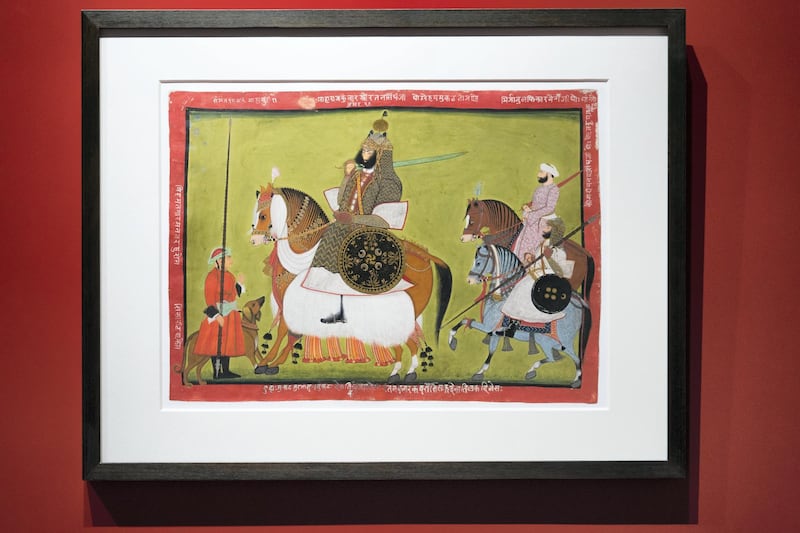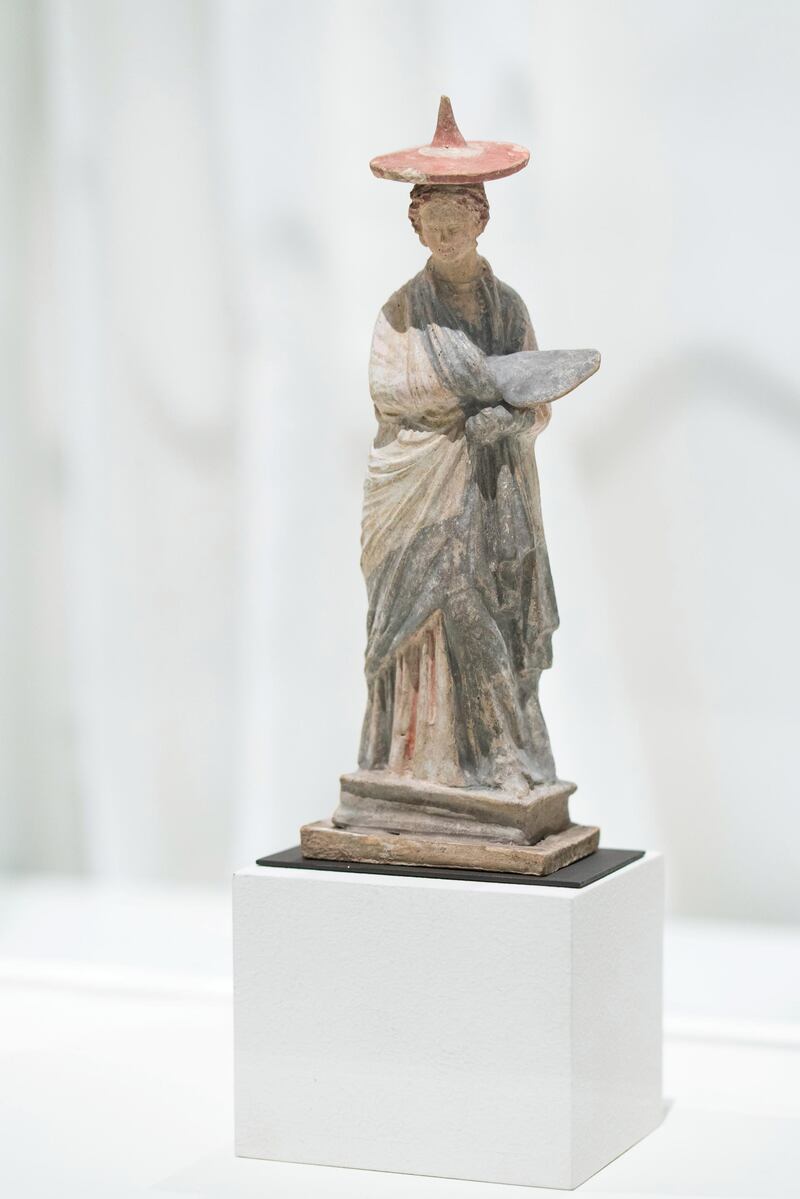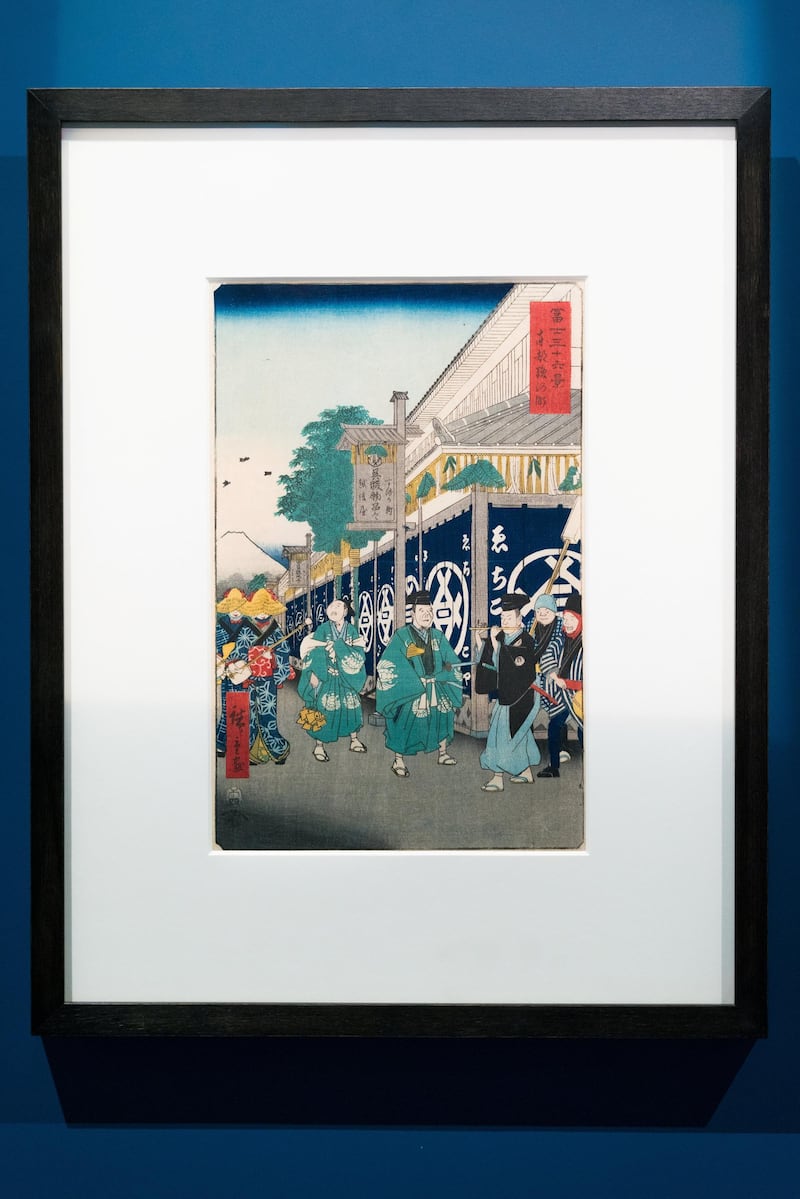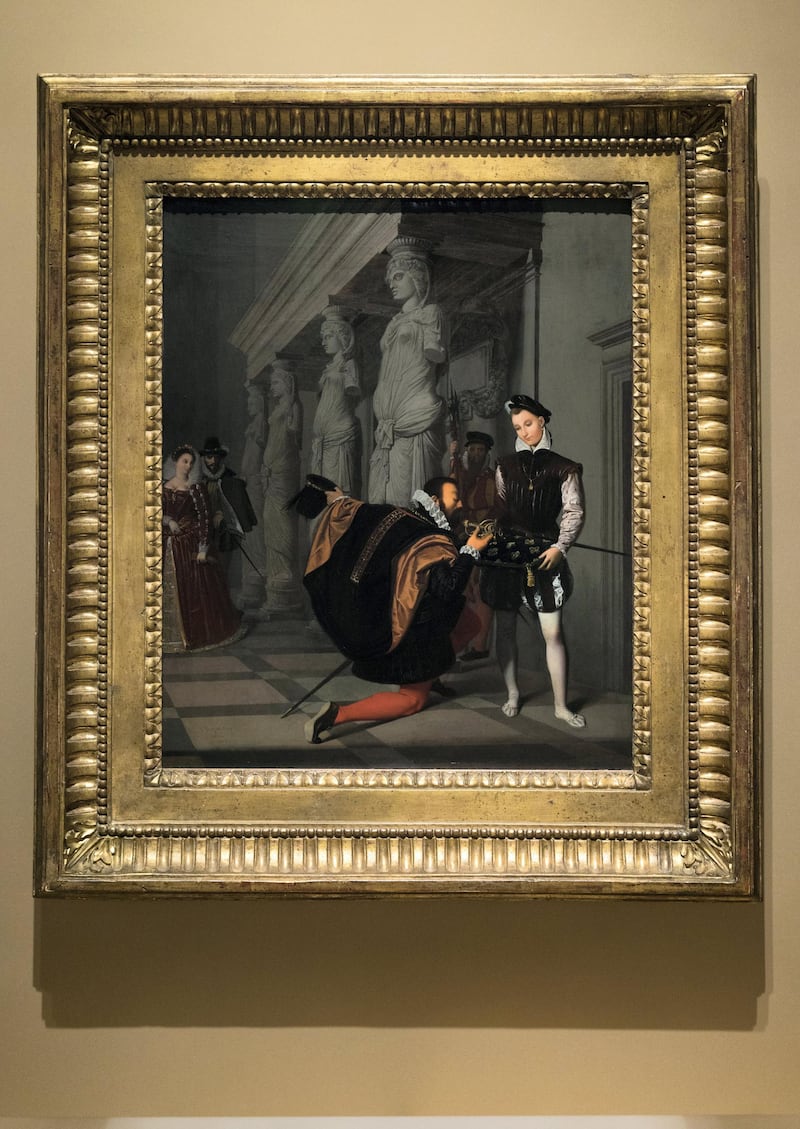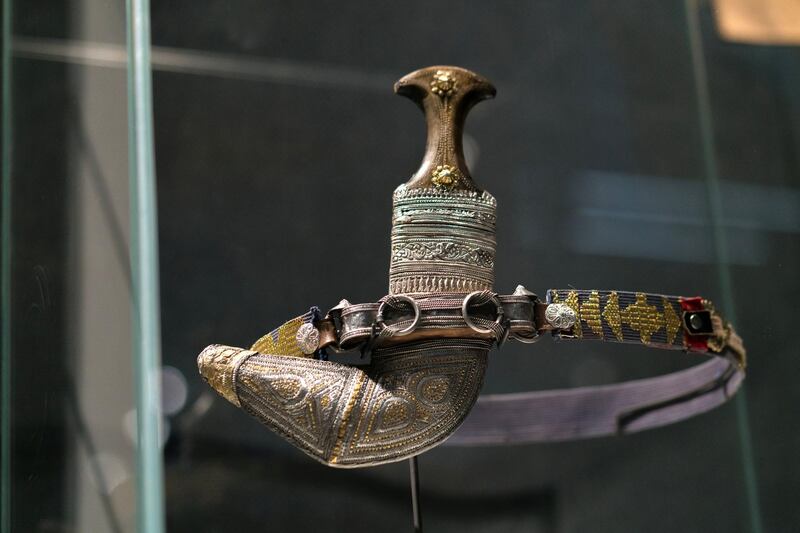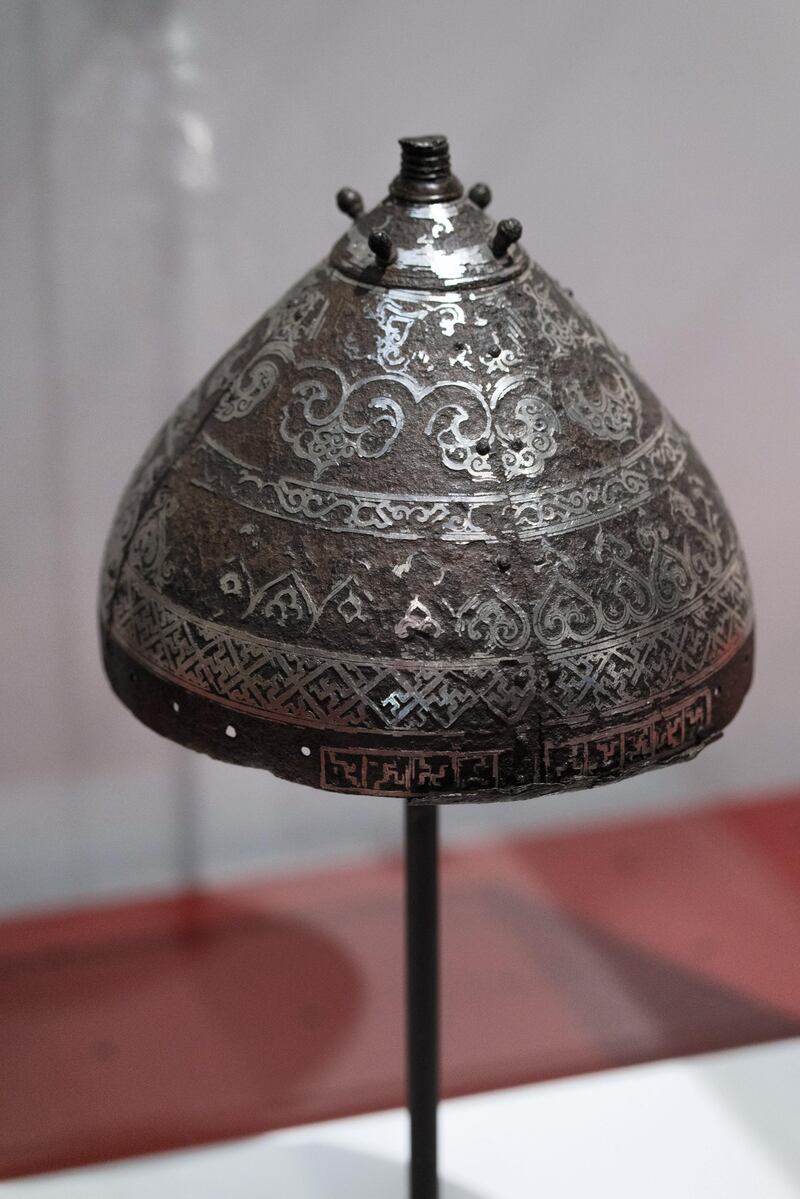Historic fashion and artistic masterpieces are not exactly child-friendly territory, unless you're in the vicinity of Louvre Abu Dhabi's Children's Museum. Here, children between four and 10 years old can take part in an interactive game, and play dress-up in costumes inspired by the clothes and accessories portrayed in six artworks that are part of the museum's permanent galleries.
The young visitors begin by creating a personal digital avatar through multimedia displays and get a wristband that records the points collected. They’ll encounter figures represented in the artworks, and be assigned a mission to retrieve an item of clothing through various challenges, including spot the difference, and drop and drag.
"A Costume Adventure combines positive play and the power of imagination. [Children can] explore how clothing is represented in some exceptional artworks and understand how other people lived throughout time," explains Catherine Monlouis-Felicite, education and cultural engagement director at Louvre Abu Dhabi.

Clothing is as crucial an element of a masterful portrait as the subject's facial features, expression and circumstance; and an outfit can draw attention to or away from itself depending on the artist's intention. For instance, the enigma of Mona Lisa's smile is, arguably, aided by the fact that she's draped in a subtle, dark-coloured, full-sleeved dress and sheer black veil, with just a hint of neckline.
The outfits and accessories that are part of the Louvre’s Costume Adventure span six time periods and cultures, in keeping with the works of art.
Scroll through the gallery above to see the artworks that inspired the interactive experience.
The oldest is simply titled Woman Figurine, a clay rendition from circa 275-250 BC, which was excavated in Boeotia, a region in ancient Greece. Since the sculptor did not sign the work, he or she remains unknown. What we do know about the simple but elegant-looking statuette herself is that she's made from kiln-baked and painted clay. She's wearing a long, pleated tunic, called chiton, and a woollen wrap used as a cloak, called himation. The presence of the himation tells us that the noble woman – who also dons a hat and a fan – is wearing the double-girdled style of chiton, which was usually made from linen and skimmed the length of the body such that it emphasised the movements of a woman's body.
Interestingly, the himation later came to represent iconographic dress, with several artworks portraying biblical figures – including Jesus Christ and the Virgin Mary – wearing the mantle.
We travel next to Mongolia, sometime between 1350 and 1450 when metal helmets in-laid with silver – as seen in Louvre Abu Dhabi – were popular. Like the Greek figurine, the blacksmith who created this specimen did not brand his handiwork, but we know that the artist first carved the shape of the iron helmet in metal, then used a hammer to fill in the spaces with silver thread. The gleam of the silver encrustations in this richly decorated piece announce the power of the helmet’s wearer, who was probably a warrior. When found], it had feathers at the top and a mailcoat was attached behind, to protect the back of the neck.
Conical helmets such as these were popular in China and Mongolia 600 years ago, and were known as rmogs. A rmog typically featured iridescent peacock feathers or grey squirrels’ tails, as well as red silk ribbons or tassels.
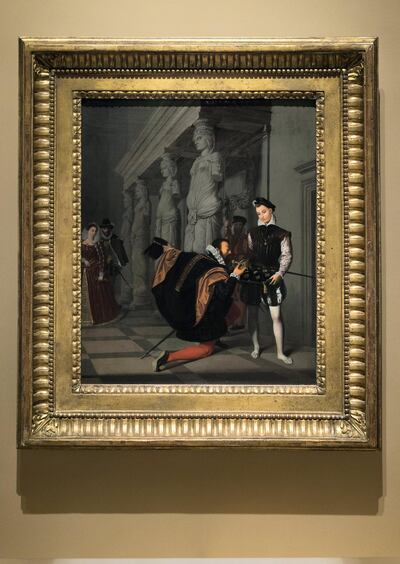
From Asia, the museum takes its young visitors to Paris, when the French neoclassical artist Jean-Auguste Dominique Ingres painted Don Pedro of Toledo Kissing the Sword of Henri IV, between 1814 and 1820. The oil on canvas depicts a scene within the Louvre Palace, the former residence of the French royal family and now the world's most famous museum.
Ingres was known for his detailed portraits and abhorrence for bright colours. Accordingly, while the artist created a wide range of hues by mixing coloured powders with oil for this painting, they remain muted, with the grey figurine columns in the backdrop threatening to overshadow the red, maroon, rust and gold hues.
However, the finery of the attire donned by the five subjects remains undisputed. “Style was everywhere in the king’s court. Everyone followed fashion and tried to attract attention with their accessories, which included feathers, gold embroidery, silk stockings, lace collars and other expensive materials,” says Monlouis-Felicite.
In this painting, for instance, Don Pedro doffs his feathered felt hat as a sign of respect to the king, who sports ivory-hued stockings made from silk, then a precious material that had to be imported from China. Likewise, Pedro's cape is lined with silk and embroidered with gold, indicating his wealth and status. The large white collars (made of cotton lace) – seen on all four men, including the two attending pages in this painting – were worn to emphasise the wearer's face.
This painting also throws light on the fact that merely 200 years ago, men’s clothing was as ostentatious as women’s garbs. The dandies of France would be rather put off by the lack of jewellery, and the navy, grey, black and beige shades that have since come to dominate menswear.
The erstwhile maharajas of India, too, were a flamboyant breed. King Ratan Singh Out Hunting, an 1835 painting by an unknown artist, shows the royal in warrior-wear, but the details of his hunting armour are undeniably intricate. Even the king's horse is controlled by gilded fur reins. The gold highlights in this piece are so painstakingly executed, that experts reckon the artist realised them using a paintbrush with a single hair.
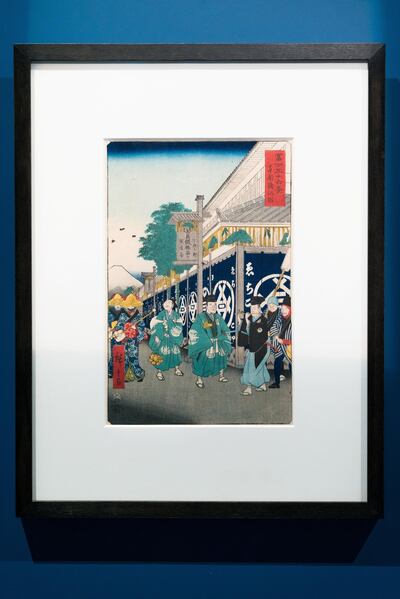
Children will enjoy putting on a life-sized replica of Ratan Singh's feather-plumed metal helmet and sporting his leather shield, decorated with flowers and crescent moons – although it may be a while yet before they are able to emulate his magnificent whiskers.
Also available for dress-up are colourful kimonos, inspired by Japanese artist Utagawa Hiroshige's The Musician Parade, from 1858. The print depicts a busy street scene with musicians wearing cotton kimonos – more elaborate patterns appear on the women – as well as eboshi straw hats and wooden getas on their feet, and carrying silk folding fans. The kimono, which simply means "thing that you wear", is a good example of a costume that has stood the test of time.
The most modern specimen in A Costume Adventure is from the Middle East. This is a khanjar, or dagger, from the 1970s, made from steel, leather, and gold and silver threads. A khanjar is made up of the qarn (hilt or horn), touq (where the blade is fixed), sadr (silver rings) and qataa (the body of the blade and the leather belt that holds it). Each dagger can take months to make, depending on its size, with daggers below five inches traditionally reserved for children.
A Costume Adventure is at Louvre Abu Dhabi until May 31, 2020
